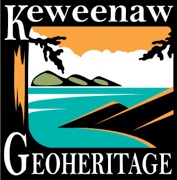
Kilauea and Iceland mainly produce lava flows, but near their vents we find pyroclastic rocks of a variety of types. Pyroclastic rocks are also a minor part of the rock record at Isle Royale. We note that such rocks are well known at most continental flood basalt provinces (see Ross et al. 2005; below). Mechanisms for generation of these deposits include magmatic and phreatomagmatic. On both Isle Royale and the Keweenaw such deposits are noted in a few stratigraphic horizons.
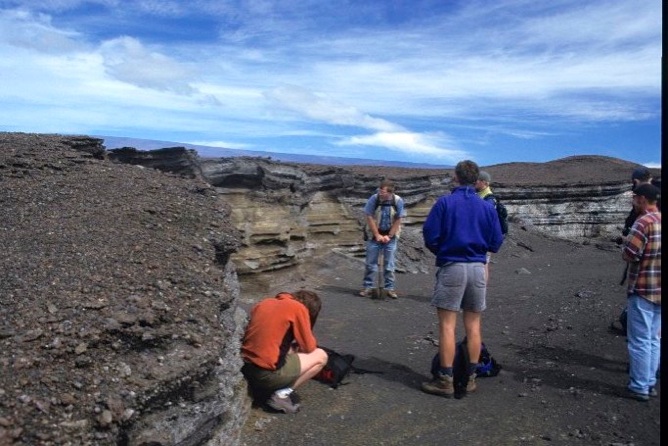
Photos from mafic volcanoclastic deposits at Kilauea, Hawaii are in the data file below, to show the kinds of volcanoclastic feature that could be expected in the Keweenaw.


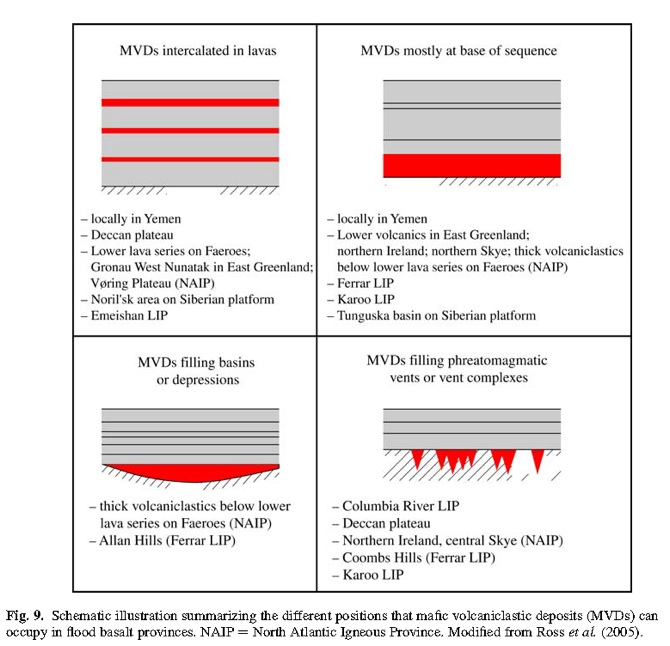


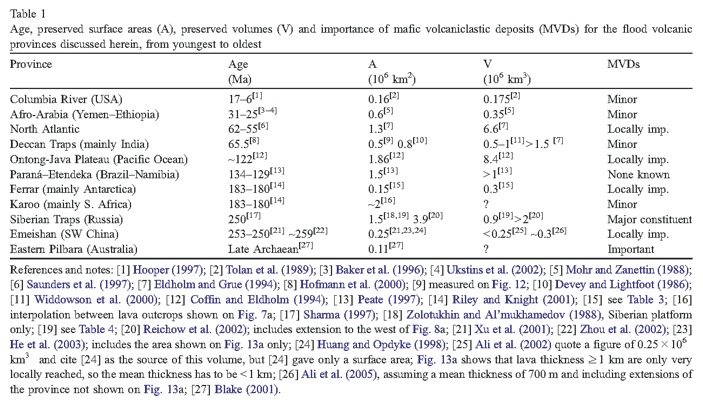
Journal of Volcanology and Geothermal Research 145 (2005) 281– 314
Flood volcanic provinces are assumed generally to consist exclusively of thick lavas and shallow intrusive rocks (mostly
sills), with any pyroclastic rocks limited to silicic compositions. However, mafic volcaniclastic deposits (MVDs) exist in many provinces, and the eruptions that formed such deposits are potentially meaningful in terms of potential atmospheric impacts and links with mass extinctions. The province where MVDs are the most voluminous—the Siberian Traps—is also the one temporally associated with the greatest Phanerozoic mass extinction. A lot remains to be learned about these deposits and eruptions before a convincing genetic link can be established, but as a first step, this contribution reviews in some detail the current knowledge on MVDs for the provinces in which they are better known, i.e. the North Atlantic Igneous Province (including Greenland, the Faeroe Islands, the British Isles, and tephra layers in the North Sea basin and vicinity), the Ontong Java plateau, the Ferrar, and the Karoo. We also provide a brief overview of what is known about MVDs in other provinces such as the Columbia River Basalts, the Afro-Arabian province, the Deccan Traps, the Siberian Traps, the Emeishan, and an Archean example from Australia.
The thickest accumulations of MVDs occur in flood basalt provinces where they underlie the lava pile (Faeroes: >1 km,
Ferrar province: >400 m, Siberian Traps: 700 m). In the Faeroes case, the great thickness of MVDs can be attributed to
accumulation in a local sedimentary basin, but in the Ferrar and Siberian provinces the deposits are widespread (>3x105 km2 for the latter). On the Ontong Java plateau over 300 m of MVDs occur in one drill hole without any overlying lavas. Where the volcaniclastic deposits are sandwiched between lavas, their thickness is much less.
In most of the cases reviewed, primary MVDs are predominantly of phreatomagmatic origin, as indicated by the clast
assemblage generally consisting of basaltic clasts of variable vesicularity (dominantly non- to poorly-vesicular) mixed with abundant country rock debris. The accidental lithic components often include loose quartz particles derived from poorly consolidated sandstones in underlying sedimentary basins (East Greenland, Ferrar, Karoo). These underlying sediments or sedimentary rocks were not only a source for debris but also aquifers that supplied water to fuel phreatomagmatic activity. In the Parana´–Etendeka, by contrast, the climate was apparently very dry when the lavas were emplaced (aeolian sand dunes) and no MVDs are reported.
Volcanic vents filled with mafic volcaniclastic material, a few tens of metres to about 5 km across, are documented in several provinces (Deccan, North Atlantic, Ferrar, Karoo); they are thought to have been excavated in relatively soft country rocks (rarely in flood lavas) by phreatomagmatic activity in a manner analogous to diatreme formation.
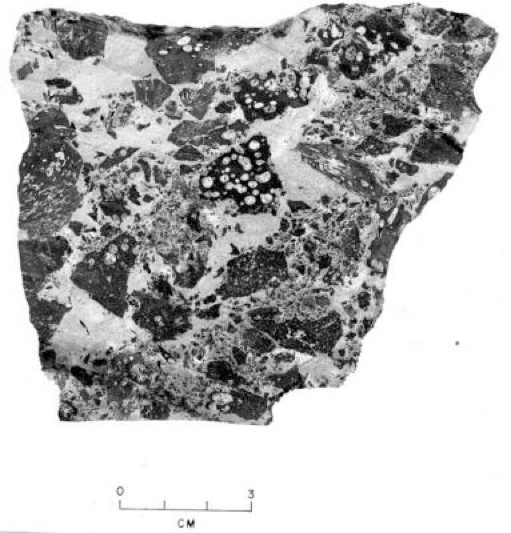
N K Huber, 1973
Some things to read:
Ross et al, 2005, Mafic volcaniclastic deposits in flood basalt provinces
White et al., 2009, Physical volcanology of continental large igneous provinces
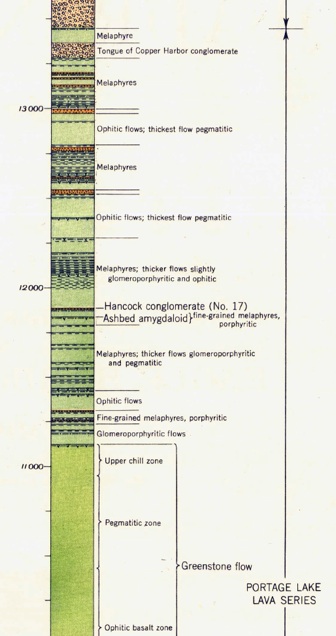


The best known MVD within the Portage Lake Volcanics is the Ashbed Amygdaloid (also called Ashbed Flow), a layer which may be from 1 to 15 m (averaging about 3 m) thick and which is located several m below the Hancock (#17) Conglomerate. The Ashbed is generally fragmental and contains interstitial fine grained detrital material. It is a horizon that is rich in minerals directly related to native copper, so it marks a favorable exploration horizon (Cornwall and Wright, 1954). For extensive discussion of various amygdaloid layers within the Portage Lake Volcanics, see Butler and Burbank (1929).
Near Copper Falls a detail of the Eagle Harbor Geological Quadrangle (below) shows many mined sites near the Ashbed Amygdaloid.


Butler, B.S. and Burbank, W.S., 1929

